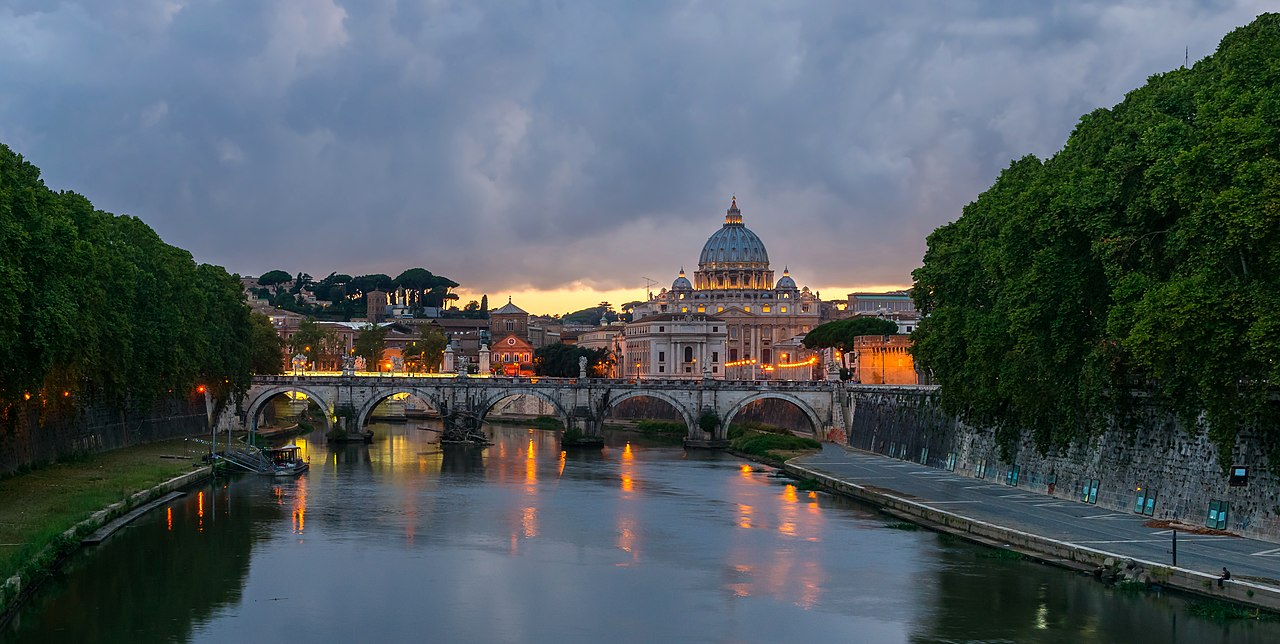Rome offers endless possibilities for adventure. From iconic landmarks to hidden gems, there’s always something exciting to do in Rome. Discover ancient ruins, vibrant neighborhoods, and stunning art. Whether you want to visit the Colosseum, explore the Vatican, or wander through charming streets, Rome has it all. Uncover the best things to do in Rome and create unforgettable memories.
The Obvious (And Totally Worth It)
1. The Colosseum
You probably knew this was a gladiator arena. What most don’t realize is that it once had a retractable roof. Well, sort of… The velarium, a massive canvas awning, was hoisted up by sailors from the Roman navy to shade the 50,000 spectators. Below the stage? A labyrinth of tunnels and cages called the hypogeum. Wild animals and fighters were prepped there before being lifted by pulleys into the arena. Today, you can actually walk those underground paths and imagine the tension before the roar.
Most people marvel at the sheer size but the real brilliance is in the crowd control. Ancient engineers designed 72 numbered entrances to funnel over 50,000 spectators to their seats in minutes. Think of it as the ancestor of the modern stadium.
Close to the Colosseum is the Forum Romanum (Roman Forum). It looks like a scattered puzzle now, but when you walk its paths you will notice something clever: the main Via Sacra was laid out to frame temples and arches like a living storyboard. Processions moved through this path in a cinematic way, revealing monuments one by one. Even today, if you walk it slowly, you feel the intended rhythm, part spiritual, part theatrical.
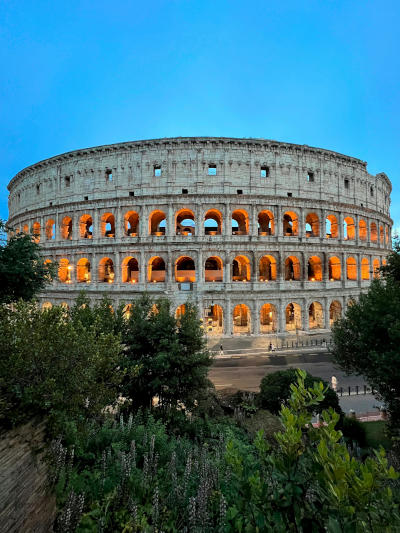
2. The Pantheon
It’s one of the best-preserved buildings from ancient Rome. And no, it hasn’t needed much help. That giant dome? Still the original concrete, over 2,000 years old. It was poured by hand with no modern reinforcements. The oculus at the top isn’t just pretty, it’s functional, letting in light (and rain, sometimes), with drains cleverly built into the marble floor. Once a temple to all Roman gods, it’s now a church and the resting place of Raphael. Yes, the Renaissance artist.
And then there’s the ceiling: a coffered dome so precisely designed it messes with your sense of space. At first glance, it looks like those square indentations are perfectly spaced, identical in size, stretching evenly from the center to the edge. But look closer. Each square is subtly reshaped, recalculated to create that illusion of balance and order. They are actually not uniform at all. It’s a masterclass in optical engineering from nearly 2,000 years ago. The whole dome pulls your eyes upward, straight to the open oculus. This circle of sky has been watching over Rome since emperors still walked these streets.

3. Trevi Fountain
Built into the back wall of a palace, the Trevi Fountain is more than just a spot to throw a coin. It marks the endpoint of an ancient aqueduct, the Aqua Virgo. It still brings fresh water from the hills outside Rome to the city. The myth? Tossing one coin means you’ll return to Rome. Two means romance, and three means marriage. Some say that was started by the local tourism board. Either way, over €3,000 is scooped out daily and donated to charity.
But the real pop culture splash? La Dolce Vita. In the 1960 classic by Federico Fellini, actress Anita Ekberg wades into the fountain in a strapless black dress, arms open, calling to Marcello Mastroianni: “Marcello, come here!” It’s one of those moments that burned itself into cinema history and into the soul of Rome itself. Tourists still reenact it (though these days, stepping into the water can get you a hefty fine). Still, the magic lingers. Especially if you wander by after midnight, when the crowds thin and the sound of the cascading water echoes like something from a dream.
Aside from the cinematic fame, here’s a quiet trick: the Palazzo Poli, which forms the fountain’s backdrop, wasn’t always so grand. When the fountain was built, the façade was redesigned and extended to act as a scenic stage set. It was creating the illusion that the fountain and palace were born together, when in fact the sculpture dominates the architecture. It’s baroque sleight-of-hand, and it works.
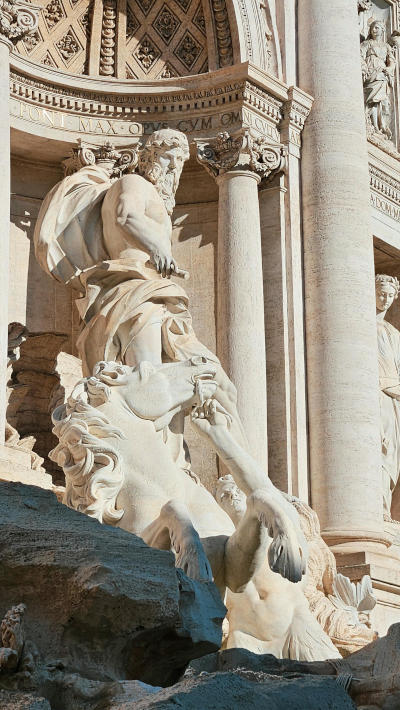
4. The Vatican (Sistine Chapel + St. Peter’s Basilica)
Michelangelo hated painting the Sistine Chapel ceiling at first. He considered himself a sculptor, not a painter. But he accepted the challenge. He spent four years perched on scaffolds, and created what’s now one of the most breathtaking works of art in existence. And down the road? St. Peter’s Basilica, where you can climb the dome for panoramic views. Or visit the crypt below, where St. Peter himself is said to be buried. Pro tip: the line for security is long! Book a skip-the-line pass if you value your legs.
Step into St. Peter’s Square, and here’s a quiet trick that might escape you at first: there’s a spot near the obelisk where, if you stand just right, the four rows of towering Doric columns lining the square collapse into perfect alignment. What looks like an endless forest of stone suddenly becomes a single row. It’s no accident. Bernini designed it that way. He used forced perspective to remind visitors that even the vast can be ordered, even the chaos of life can fall into divine symmetry. A humble little moment in a place built to awe.
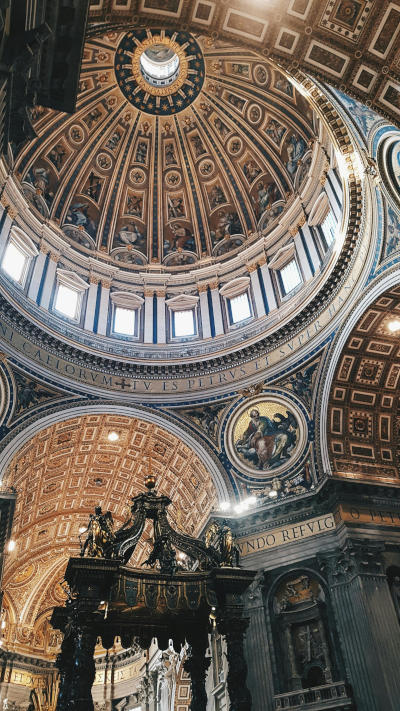
5. Piazza Navona
You’re standing where Romans once roared: not at gladiators, but athletes. Piazza Navona traces the exact footprint of the Stadium of Domitian. The stadium held more than 20,000 spectators for Greek-style games, not unlike today’s Olympic events. And those curves? That’s no accident. The shape of the modern square follows the outline of the arena.
Over the centuries, the stadium crumbled, but the bones are still here. Look down at certain corners and you’ll spot the original stadium walls, about three meters high in places. Some are even visible below street level, peeking through grates or tucked behind modern façades.
In the Baroque era, it was reborn in marble and fountains. Bernini’s Fountain of the Four Rivers steals the show at its center, complete with a hulking Egyptian obelisk and muscular river gods:
- The Nile represents Africa. It is shown with his head veiled, a nod to the mystery of its then-unknown source. This is a clever artistic wink to the idea that some parts of the world still held secrets even the Church hadn’t unraveled yet.
- Danube – representing Europe. He’s often shown touching the papal coat of arms, symbolizing the river’s closeness to Rome and the Church.
- Ganges – representing Asia. He holds an oar, symbolizing the river’s navigability and its importance in trade and travel.
- Rio de la Plata – representing the Americas. He’s typically leaning back in surprise, possibly due to the fear of the “new world” or, as some playful interpretations suggest, because of the looming obelisk above.
Each river god symbolizes not just geography but the Church’s global reach. Bernini packed the fountain with drama, symbolism, and cultural pride, all sculpted into muscle and marble.
The square also has two more fountains, street musicians, artists sketching portraits, and that classic Roman vibe of “I’ll just sit here for a minute and maybe stay an hour.”
Oh, and during the 17th century? They’d flood the square on summer weekends, creating artificial lakes so nobles could parade around in boats for fun. You can’t make this stuff up.
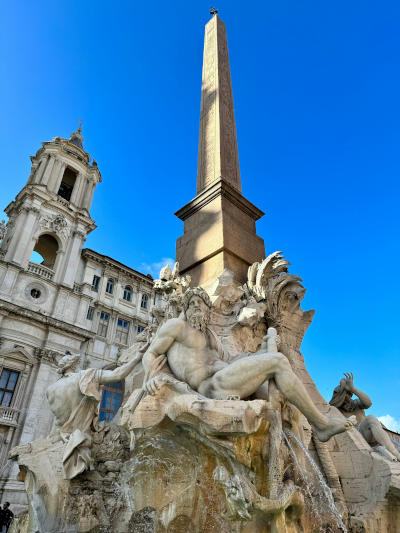
Off the Beaten Track
1. Chiesa del Gesù

From the outside, it looks like just another Roman church. But step inside, and you’re hit with a ceiling so stunning, it almost messes with your depth perception. The fresco by Giovanni Battista Gaulli (also known as Baciccio) uses light, shadows, and architectural trickery to make the ceiling look like it opens into heaven, literally. Have a closer look and find that the ceiling is actually as flat as the ones in your home. It just appears three-dimensional, no 3D glasses needed. It’s also the final resting place of St. Ignatius of Loyola, founder of the Jesuit Order. His elaborate tomb sits in a side chapel glittering with gold and semi-precious stones. The best part? You might be the only tourist in there, staring up with your mouth open.
From Termini, hop on Metro Line A toward Battistini and get off at Barberini. From there, you walk about 10 minutes through some charming side streets. Just follow signs to Piazza Venezia and you’ll find it tucked right behind it.
2. Aventine Keyhole
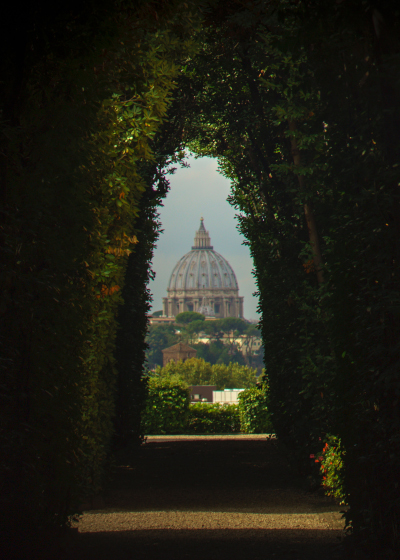
It sounds like something from a spy movie, and honestly, it feels like one too. High up on the Aventine Hill, there’s a nondescript green door. Peer through its keyhole, and boom: a perfect view of St. Peter’s dome, framed by manicured hedges in the garden of the Knights of Malta. No filters needed. It’s one of those “secret” spots that locals love to point visitors toward with a knowing grin. The walk up is peaceful, the crowd is small, and the photo is pure magic.
Take Metro Line B to Circo Massimo, then it’s a 15-minute uphill walk past the Orange Garden. The view through that tiny keyhole? Totally worth the climb.
3. Centrale Montemartini
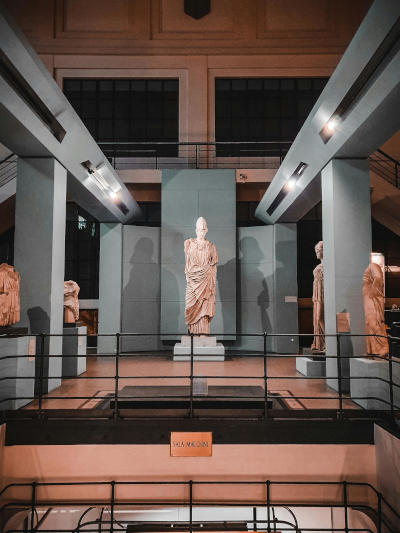
Imagine marble statues of Roman gods casually chilling between massive vintage diesel engines and industrial turbines. That’s Centrale Montemartini, a lesser-known museum in a decommissioned power plant. It’s one of the most surreal juxtapositions in the city. Classical elegance meets gritty machinery. You get up-close views of sculptures that once lived in the Capitoline Museums, now given a strange new context under flickering warehouse lights. Weird? A little. Memorable? Absolutely.
Jump on Metro Line B toward Laurentina and get off at Garbatella. From there, it’s a 10-minute walk—and the museum’s industrial vibe hits you the moment you spot the smokestacks.
4. Quartiere Coppedè
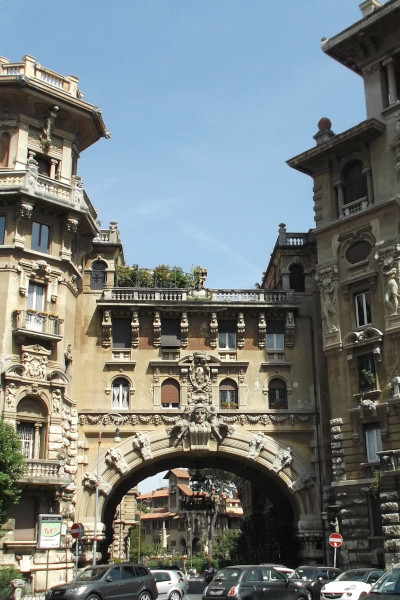
(c) Sergio D’Afflitto, 2015
Attribution-Share Alike 4.0 International
Ever wondered what it’d look like if Art Nouveau, ancient Rome, and a touch of Gothic fantasy had a baby? Welcome to Coppedè, a small, dreamy neighborhood in the Trieste district that feels like walking through a Guillermo del Toro film set. There’s a frog fountain, wrought iron spiders, hanging chandeliers between buildings, and villas with turrets and mosaics. It’s not on the usual tourist track, which makes it the perfect detour for an afternoon wander.
Take bus 92 from Termini (toward Marconi) and get off at Tagliamento. The entrance to this whimsical neighborhood is just across the street. You’ll spot the archway and chandeliers first.
5. Parco degli Acquedotti
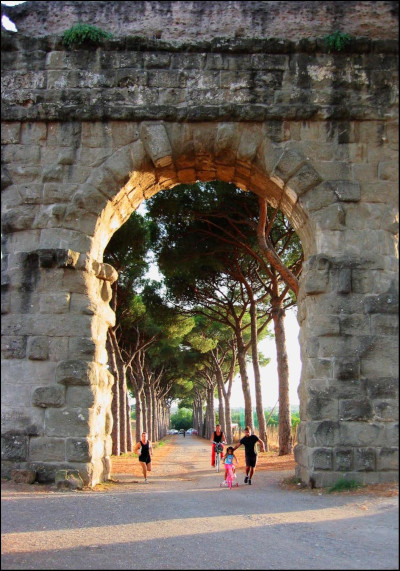
By iessi – Flickr, CC BY 2.0
If you want to see how ancient Rome still muscles its way into daily life, come here. This sprawling green park, part of the Appian Way Regional Park, is where locals jog, walk dogs, or picnic under the towering skeletons of old aqueducts. Some of these arches have stood since the 1st century BC. It feels oddly pastoral, with tall grasses and crumbling stone cutting across the horizon like something out of a Ridley Scott film. Bring a sandwich, sit in the shade, and just take it in. It’s the quieter, wider-angle version of the Rome you didn’t know you needed.
From Termini, hop on Metro Line A toward Anagnina and get off at Giulio Agricola. From there, it’s about a 15-minute walk through a quiet neighborhood, just follow the signs to the park, and you’ll soon be surrounded by ancient aqueducts and wide open space. Alternatively, you can take bus 590 toward Cinecitta and get off at the “Tuscolana/Appio Claudio” stop. Then enjoy a short, leisurely walk amid the ancient arches.
